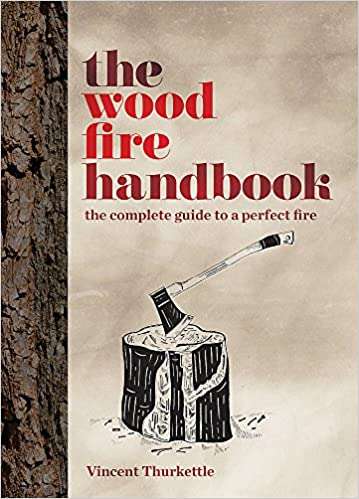
When I read a book I have the habit of highlighting certain passages I find interesting or useful. After I finish the book I’ll type up those passages and put them into a note on my phone. I’ll keep them to comb through every so often so that I remember what that certain book was about. That’s what these are. So if I ever end up lending you a book, these are the sections that I’ve highlighted in that book. Enjoy!
The bark of several tree species has some fire resistance. You will get a better, quicker fire by always facing the clean split surface towards the heart of the fire; this will help the log to catch.
The logs of all tree species split more easily when they are green.
You should split conifer logs when they are seasoned. These woods are very resinous. After a relatively short period of splitting freshly felled conifer logs, your hands, axe, and clothes are sticky with resin, which then collects all available dust and dirt to form hard-to-clean black patches.
Logs also split well when they are frozen.
The splitting axe cannot be too blunt. In the sense that it should be dull and that’s totally okay. The axe will occasionally get stuck in the log and getting it out again is frustrating and a complete waste of time and effort. So, when you strike a log, ideally you want the axe to split of bounce back a couple of inches; a very blunt axe will do this much better than a sharp one.
There are some logical advantages to keeping your chopping block low – around 6in. below your knee height.
A trick to amuse and puzzle your visitors is to tap a couple of copper nails into a log. This will create a patch of gossamer blue-green fire among the normal flames.
You can sometimes deliberately place a coffee bean, a scrap of birch bark, or a few grains of frankincense or amber onto your hot wood-burning stove to create a nice smoke scent.
If you are building a fire primarily for flame and light then the first rule would be to select the driest wood possible. Avoid rotten wood, which will only ever smolder, producing a good deal of smoke, but no flame. I would say the next most important thing is to resist the temptation to try and burn large-diameter wood (Logs of 3in. diameter or less).
The denser the woods, perhaps predictably, make the best embers. Favorites include hornbeam, beech, oak, elm, hawthorn, and fruitwoods.
If you are only sitting on one side of the fire, then it may be an idea to build a reflector on the other side. This is easily done by pushing two sharpened poles into the ground, which should lean slightly away from you. Place split logs horizontally against these uprights, with the clean, white surface facing you. These reflectors significantly increase the warmth you will feel from your fire.
Pyramid Fire
These fires are good for flames and light. They are not good for general cooking but are great for boiling water. A pot or kettle suspended in the top of, or just above, the fire’s flames is fine and should boil quickly, especially if you feed the fire a steady diet of small, dry sticks.
Post Top Fire
Dry posts 8-12in. in diameter can be driven into the snow so that the post top is about waist high. The post tops can be cut vertically down to about 9in. across the center three times. This divided the remaining wood into six pie-shaped segments that are still attached to the post at one end. An oily rag can be pushed into the center of the six segments and the fire lit. These small fires burn well for what seems like a very long time and are perfect for hand warming.
Log Cabin Fire
This well-made fire should throw out a lot of low heat and is good to sit around. It also is a good design for cooking as there are plenty of embers. Place two large logs parallel to the wind direction so that air can move through the fire freely. To get a little more creative, make a standard square fire, but with a forked stick pushed into the ground on each corner. Two thick, straight, freshly cut poles are then laid between each of the pairs of forks. And the clever thing – two slightly thinner poles were loosely laid across the primary two. These gave support for a pan or grill and the cook had the complete flexibility to move the cooking food to whichever part fo the fire was the right temperature.
@joekotlan on X